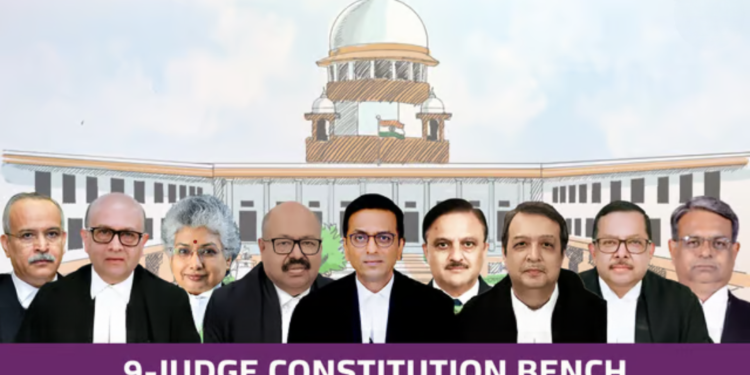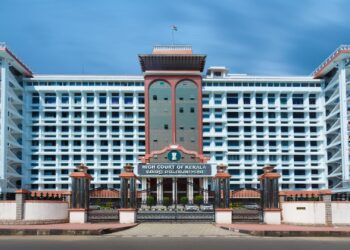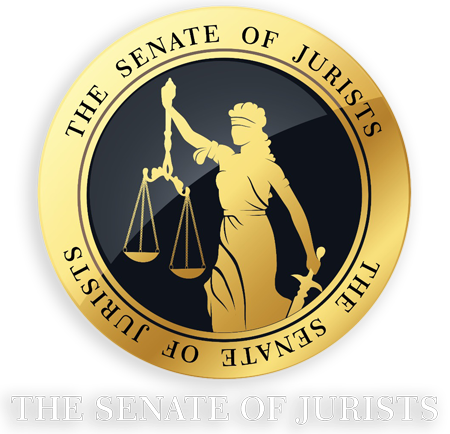On Thursday, a nine-judge Constitution Bench of the Supreme Court ruled that the royalty paid by mining operators to the Central government is not a tax and that states have the authority to levy cesses on mining and mineral-use activities [Mineral Area Development Authority etc vs Steel Authority of India and ors].
The judgment was delivered by Chief Justice of India (CJI) DY Chandrachud, along with Justices Hrishikesh Roy, Abhay S Oka, JB Pardiwala, Manoj Misra, Ujjal Bhuyan, Satish Chandra Sharma, and Augustine George Masih. Justice BV Nagarathna dissented from the majority opinion.
The Court held that the Mines and Minerals (Development & Regulation) Act (Mines Act) does not strip states of the power to levy taxes on mineral rights. Consequently, the Court overruled its 1989 judgment in India Cement Ltd vs. State of Tamil Nadu.
However, Justice BV Nagarathna disagreed with the majority’s conclusions. Reading the majority judgment, CJI Chandrachud stated:
“Royalty is not in the nature of tax… We conclude that the observation in the India Cements judgment stating that royalty is tax is incorrect… Payments made to the government cannot be deemed to be a tax merely because a statute provides for its recovery in arrears.”
Thus, the majority ruled that states retain the power to levy cess on mining or related activities. They stated that the legislative power to tax mineral rights lies with the state legislature and that Parliament does not have the legislative competence to tax mineral rights under Entry 50 of List 1. The state legislature has this competence under Article 246 read with Entry 49 of List 2 to tax mineral-bearing lands.
Justice BV Nagarathna, however, held a different view:
“I hold royalty is in nature of the tax. States have no legislative competence to impose any tax or fee on mineral rights. Entry 49 is not related to mineral-bearing lands. I hold the India Cement decision was correctly decided.”
Following the judgment, petitioners requested the Court clarify whether the verdict would be prospective and not affect past transactions. The Bench agreed to address this aspect on July 31, with the CJI assuring that the matter would be decided then.
The case involved whether state governments are stripped of powers to tax and regulate mining and mineral activities due to the Mines and Minerals (Development & Regulation) Act (Mines Act). This was the oldest pending nine-judge Bench case before the apex court, with the judgment reserved since March 14.
In 1989, the Supreme Court ruled in India Cement Ltd v. State of Tamil Nadu that royalty is a form of ‘tax’ under the Mines Act, and that imposing cesses on such royalty was beyond states’ legislative competence. Subsequent rulings in 1995 and 2004 further addressed this issue, leading to the referral to a nine-judge Bench in 2011 due to perceived conflicts in previous judgments.
The Central government argued that states cannot levy taxes on mineral-bearing lands, asserting that royalties levied by the Central government ultimately benefit the states. Solicitor General Tushar Mehta argued for uniform mineral industry development at the national level to prevent fragmented state-wise levies that could hinder mineral development and utilization.
The majority of the nine-judge Bench disagreed with the Centre’s stance. They ruled that the states’ right to impose taxes on mineral rights remains unless limited by Parliament. They clarified that the Mines Act cannot impinge upon the states’ taxing rights, and that royalty payments under Section 9 are not taxes on mineral rights.
Justice BV Nagarathna, in her dissent, opined that royalty payments under the MMDR Act are unique and should be considered a form of tax, arguing that allowing states to levy additional taxes on mineral use would lead to double taxation and hinder mineral development.
Following the judgment, the Court was urged to clarify the prospective application of the verdict, with the CJI assuring that this aspect would be decided on July 31.

















